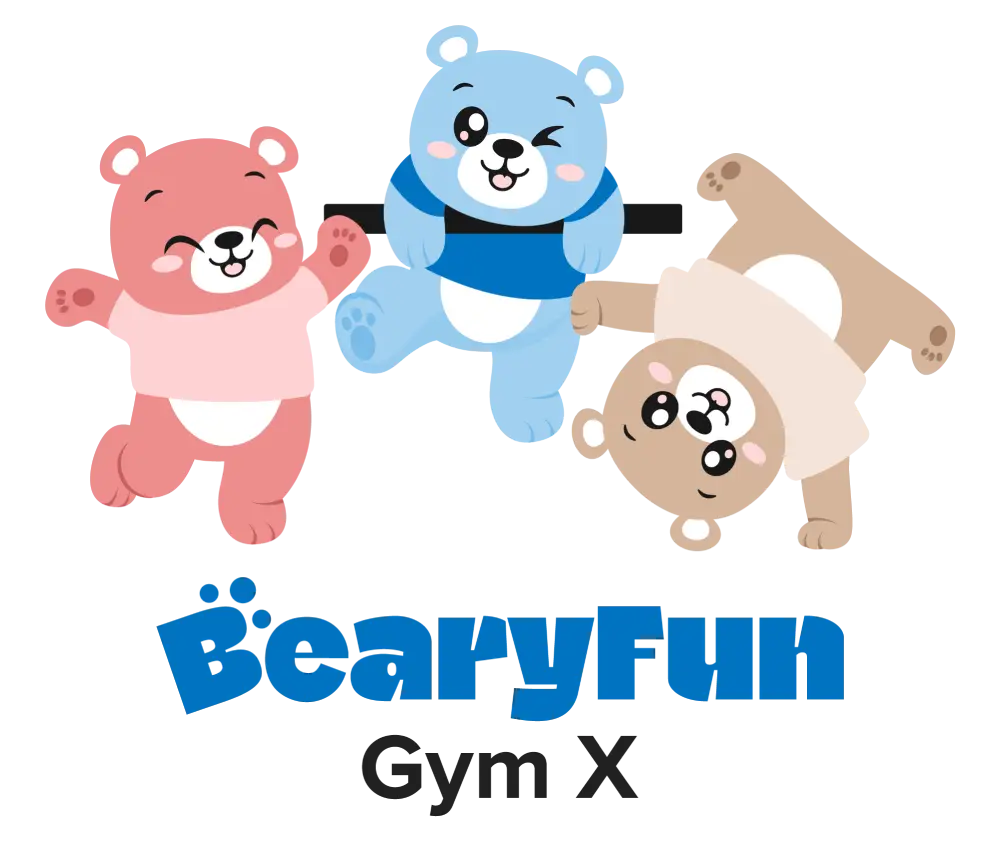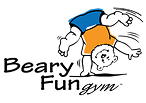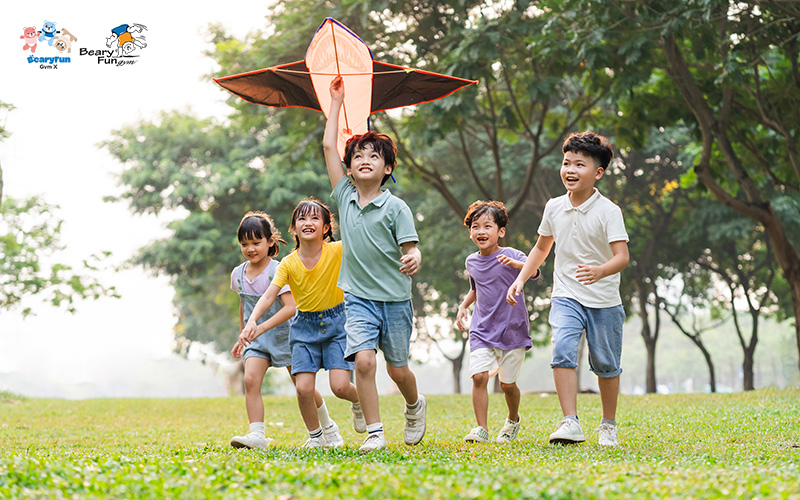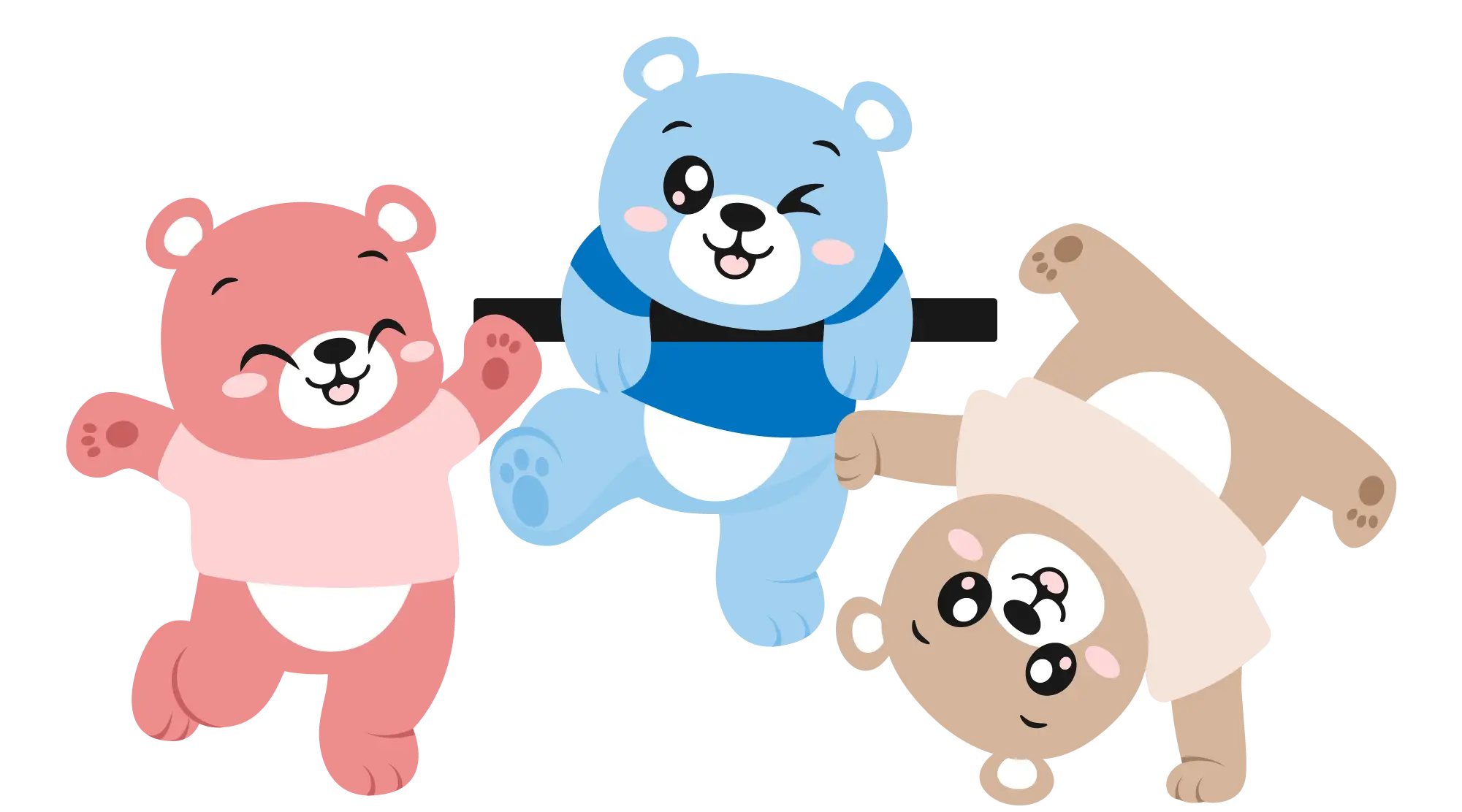Introduction
Montessori education is often associated with quiet classrooms, wooden materials, and children deeply focused on their work. But did you know it’s more than just an academic approach? As a philosophy of child development, Montessori champions independence, movement, and learning through exploration.
While these ideas first took root in traditional classrooms, their influence goes a long way. In fact, well-designed children’s gym classes can become a dynamic extension of these values. With movements and mindful learning complementing each other, gym environments offer structured freedom, age-appropriate challenges, and opportunities for children’s self-paced discovery. This allows children to build confidence, coordination, and independence.
In this article, we’ll explore what Montessori education is all about and how a children’s gym can bring its core ideas to life through movement.
Key Takeaways:
Holistic child development is what the Montessori approach focuses on. This philosophy supports the process through independence, movement, and hands-on exploration.
Both environments are thoughtfully designed to promote self-directed learning, freedom within structure, and development through active engagement.
Repetition builds mastery—whether it’s a child revisiting a Montessori task or practising a gym activity like climbing or balancing. Both strengthen skills and confidence.
Giving children the freedom to choose activities supports intrinsic motivation, decision-making, and a deeper sense of ownership over their growth.
By blending cognitive, physical, and emotional learning, Montessori-inspired gym programmes foster resilience, social interaction, and readiness for lifelong learning.
In gym environments, children are encouraged to take calculated risks in a safe and supportive setting, like what Montessori is emphasising in the children’s learning process.
Both Montessori classrooms and children’s gyms promote peer learning through observation, imitation, and cooperation. Whether it’s waiting for a turn on the balance beam or helping a friend complete an activity, these shared experiences build empathy, patience, and teamwork skills naturally.
When Montessori values are reinforced at home, in school, and in the gym, children gain a strong sense of stability and trust. This consistency in expectations helps children feel secure and confident as they navigate different learning spaces. |
Understanding the Montessori Method
What is the Montessori Method?
Montessori is a child-centred approach to education developed by Italian physician and educator Dr. Maria Montessori in the early 1900s. Based on years of scientific observation, this method places deep trust in a child’s natural curiosity and developmental rhythm. What’s behind the Montessori method is that it empowers children to take charge of their own learning through exploration, independence, and meaningful hands-on experiences.
Now that we have had a rough idea of what a Montessori approach is like, let’s further explore its core principles:

1. Freedom Within Limits
Children are given the freedom to choose their activities from a range of age-appropriate options. However, this freedom exists within a carefully structured environment that guides purposeful choices and encourages responsibility.
2. Respect for Individual Development
Montessori is built on the idea that every child is an individual. It values how each of them develops at their own pace and follows their own interests. This principle allows for differentiated learning without pressure or comparison.
3. Sensorial and Experiential Learning
Montessori classrooms are rich with tactile materials designed to engage the senses. From bead chains to sandpaper letters, each material invites hands-on discovery, encouraging children to learn by doing, not memorising.

4. Prepared Environment
Montessori spaces are intentionally curated to be calm, ordered, and accessible. Every object has a purpose, while materials are arranged to promote independence and concentration. The environment acts as a silent teacher, guiding children through self-initiated exploration.
5. Repetition for Mastery
Children are encouraged to repeat activities as often as they need. This repetition isn’t viewed as rote practice, but as a natural part of mastery. During the process, kids build confidence, deepen understanding, and refine skills in their own flow.
How Is Montessori Applied in Modern Contexts?
Montessori education may have started in specialised classrooms, but its reach has expanded beyond traditional school settings. Today, what it means to follow Montessori spans homeschool curricula, enrichment centres, and parenting styles. These modern adaptations retain the methodology while making the approach more accessible to diverse families and learning settings.
Flexibility is another key aspect. For children with learning differences or varying developmental needs, the Montessori approach provides customisable pacing, materials, and methods. This makes learning more inclusive and attuned to individual strengths.
Montessori-inspired movements have now become an integral part of kids’ sports, gym classes, and other activities. Embracing what is behind Montessori education, these prepared environments for kids promote freedom of movement, respect for each child’s unique abilities, and hands-on, purposeful play.
What You Need to Know About Montessori Classrooms vs. Children’s Gyms
Though different in setting, Montessori classrooms and children’s gyms share similar goals: fostering independence, self-paced exploration, and holistic development. As Montessori principles gain traction beyond traditional education, many parents are beginning to notice how movement-based environments mirror what a Montessori classroom is like.
Let’s explore the parallels that make both spaces powerful tools for child development.
1. Prepared Environment vs. Structured Play Space
Montessori classrooms are thoughtfully arranged with hands-on materials that promote self-directed learning. Every shelf, object, and activity is purposefully placed to support the child’s growth and autonomy.

Similarly, gym classes for kids are designed with intention. Age-appropriate equipment like balance beams, obstacle courses, and climbing walls serve as tools to develop coordination, motor planning, and confidence. While one space focuses on cognitive learning and the other on physical development, both environments promote child-led physical development by inviting young learners to explore freely and engage deeply.
2. The Role of the Adult
In a Montessori setting, the teacher doesn’t lead from the front. Instead, they observe, guide, and offer subtle support as needed. This is what makes Montessori-focused learning empowering and rewarding for the little ones.
From Classroom to Playroom: What a Child’s Gym is Like, Inspired by Montessori Principles
What Montessori Learning is Like in a Child’s Gym
Both the Montessori classroom and children’s gymnasium classes aim to encourage movement, foster independence, and celebrate the unique pace of every child’s development. The question is, how is Montessori applied in active play in a kids’ gym? Read on for further insights.

1. Freedom of Movement and Choice
Montessori gym activities do not mandate what young minds should do; they allow them to choose what to explore. Whether it’s climbing, balancing, or tumbling, these choices foster independence, encourage decision-making, and spark intrinsic motivation.

2. Learning at Their Own Pace
There’s no pressure to move on quickly. Children are free to revisit the same station or movement repeatedly until they feel confident. This reflects what the Montessori method is—a belief in non-linear, self-paced progress driven by the child’s internal readiness.
3. Purposeful Repetition Builds Mastery
In both classrooms and gyms, repetition is key. Just as Montessori students repeat hands-on tasks to build deep understanding, gym-goers practice physical movements. For example, children jump or swing to develop strength, balance, and coordination.
4. Hands-On Exploration Through Movement
In line with what Montessori methodology is all about, the gym also creates tactile, hands-on learning environments for children to engage both body and brain. Through obstacle courses, climbing walls, and other movement-based problem-solving, they can effectively enhance motor skills and cognitive flexibility.
5. Rich Sensorial Experiences
From textured mats to balance beams and motion-based equipment, children’s gyms emphasise sensorial learning through play—like what Montessori education is about. The process features activities that help engage all the senses of children to deepen their self-awareness.
6. Independence and Risk-Taking in Safe Spaces
Montessori environments encourage children to take safe, calculated risks. This also applies to well-designed gym classes for kids that support trial and error. Children stumble, retry, and build resilience within a safe and supportive space.
7. Peer Learning and Social Development
In both gyms and Montessori classrooms, young explorers learn by observing, mimicking, and collaborating with peers. These organic social interactions support empathy, communication, and cooperation—key outcomes of what a Montessori approach is.
Why This Approach Works for Early Childhood Development
1. Cognitive Benefits of Movement-Based Learning
Movement can be in both physical and neurological forms. Physical activities in gym settings enhance brain development by improving coordination, spatial awareness, and memory. Children who move with purpose tend to focus better, process information faster, and are more ready to learn in formal settings.
2. Emotional and Social Growth
Every small achievement helps build confidence. From balancing on a beam to reaching the top of a climbing structure, each move contributes to the overall development. Meanwhile, group play fosters empathy, self-regulation, and teamwork. These emotional and social skills are just as important as academic ones in early childhood.

3. Bridging Home, School, and Gym Environments
Consistency matters. When the values of what the Montessori method is are echoed in the classroom, at home, and even in the gym, children experience stability and security. This consistency reinforces core principles like independence, self-discipline, and curiosity, ultimately laying a strong foundation for lifelong learning.
How BearyFun Gym Supports Your Child
At BearyFun, each class is structured to develop flexibility, coordination, and confidence through age-appropriate activities:
1. Warm-Up and Stretching
We begin with dynamic warm-ups and static stretches to prepare the body and improve flexibility—essential for safe and effective movement.

2. Locomotor Skills Practice
Children engage in activities that develop spatial awareness, body control, and the ability to move with purpose and precision.
3, Fitness Circuits
Using a comprehensive fitness circuit that covers floor circuit, bar circuit, and trampoline routine, our fitness classes offer children a fun, guided way to strengthen and explore their physical abilities.
4. Cool-Down & Reflection
Each session wraps up with a calm transition, allowing children to reflect on their progress in a supportive environment.
Our syllabus is built on four essential awareness:
- Body Awareness: Understanding what the body can do
- Space Awareness: Knowing where the body can move
- Effort Awareness: Learning how the body can move
- Relationship Awareness: Exploring movement with others and objects
Frequently Asked Questions
1. How does BearyFun Gym support children of different developmental levels?
We recognise that each child grows at their own pace. Our coaches use developmentally appropriate practices to guide every child according to their physical, cognitive, and emotional needs.
2. Can shy or introverted children thrive in a gym class?
Yes. Our gym classes for kids are designed to be encouraging and pressure-free. Many shy children become more confident over time through small wins and gentle support from our coaches and peers.
3. How does gymnastics build a foundation for other sports?
Gymnastics enhances coordination, strength, balance, flexibility, and body agility. These essential skills can be carried over into other sports like swimming, football, and dance.
4. What age can my child start attending BearyFun Gym classes?
Our programmes welcome children as young as 18 months old. We offer age-appropriate classes that grow with your child—focusing first on fundamental movement skills and gradually building coordination, confidence, and physical literacy.
5. Are the classes competitive or exam-based?
No. At BearyFun Gym, we believe in non-competitive learning. Our focus is on personal growth, not comparison. Children are encouraged to progress at their own pace, celebrate their efforts, and enjoy the process of movement and discovery.
Conclusion
Now that we have uncovered the connection between children’s gym environments and what Montessori is about, it becomes clear how both emphasise independence, hands-on exploration, and self-paced learning. In this way, the gym becomes more than just a place for movement—it becomes a dynamic extension of learning and growth.
BearyFun Gym believes movement is the foundation of all physical development. The perfect place to start, our gym classes for toddlers in Singapore equip your little ones with key movement skills in a fun, safe, and non-competitive environment.
Contact us to learn how we can support your child’s physical and cognitive development.




